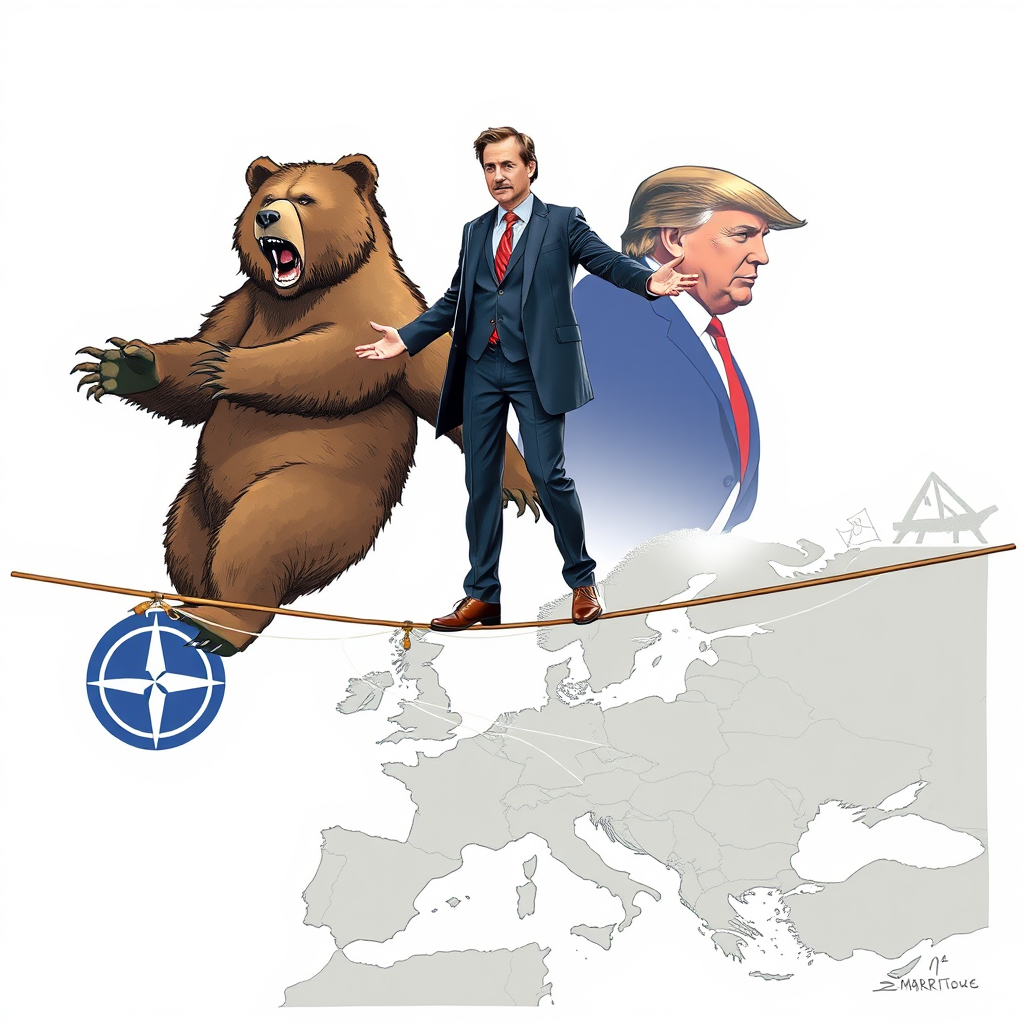Can NATO Survive Trump and Russia’s Threat?

Mark Rutte, the newly appointed Secretary General of NATO, faces a monumental task: bolstering the alliance against a resurgent Russia while navigating the unpredictable foreign policy of a potential second Trump administration. The former Dutch Prime Minister inherits an organization at a critical juncture, tasked with supporting Ukraine, deterring further Russian aggression, and reassuring increasingly anxious European allies.
Rutte’s approach appears to be a blend of pragmatic realism and cautious optimism. He emphasizes NATO’s economic and industrial superiority over Russia – a combined economy of $50 trillion versus Moscow’s $2 trillion – but simultaneously warns against complacency. He acknowledges the need for significantly increased investment in defense and a revitalization of defense industrial production to counter Russia’s ongoing military reconstitution.
The situation in Ukraine looms large. While NATO members agreed to a path toward eventual membership for Ukraine, Rutte strikes a delicate balance, acknowledging the commitment while tempering expectations for immediate inclusion, particularly as part of any peace negotiations. This position, while frustrating to Kyiv, reflects the complexities of integrating a nation actively at war and the need to manage the concerns of all 32 member states.
Rutte’s diplomatic dance extends to managing the expectations surrounding Donald Trump. He publicly supports Trump’s efforts to broker a peace deal, even while acknowledging the former president’s unconventional approach and past criticisms of the alliance. This willingness to engage, even with a potentially disruptive figure, underscores Rutte’s pragmatic approach and his commitment to maintaining a functioning relationship with the United States, regardless of who occupies the White House.
However, the reliance on Trump’s deal-making abilities is a gamble. The U.S. Ambassador to Ukraine recently resigned, voicing concerns that the Trump administration was putting undue pressure on Ukraine rather than Russia. Rutte dismisses these concerns, praising Trump for breaking a deadlock and engaging with both sides. This unwavering support, while strategically calculated, could prove problematic if Trump’s peace efforts falter or prioritize U.S. interests over the security of Europe.
Beyond Ukraine and the U.S.-NATO relationship, Rutte faces the challenge of ensuring that European allies fulfill their commitments to increased defense spending. While progress has been made, many nations still fall short of the 2% of GDP target. Rutte’s ability to galvanize further investment will be crucial to strengthening NATO’s collective defense capabilities.
The downing of MH17 in 2014 appears to have been a formative experience for Rutte, solidifying his view of Vladimir Putin and reinforcing the need for a strong NATO. He describes the incident as shattering any illusions he may have had about the Russian President and highlights the importance of holding Russia accountable for its actions.
Despite the numerous challenges, Rutte projects an air of cautious optimism. He believes that NATO can effectively deter Russian aggression and maintain a secure Europe, but only if it remains vigilant, invests in its defenses, and adapts to the evolving security landscape.
Ultimately, Rutte’s success will depend on his ability to navigate the complex geopolitical currents, manage the competing interests of member states, and forge a united front against a resurgent Russia. It’s a daunting task, but one that he appears to be approaching with a blend of pragmatism, diplomacy, and a quiet determination. The alliance’s future, and perhaps the security of Europe, may well rest on his shoulders.